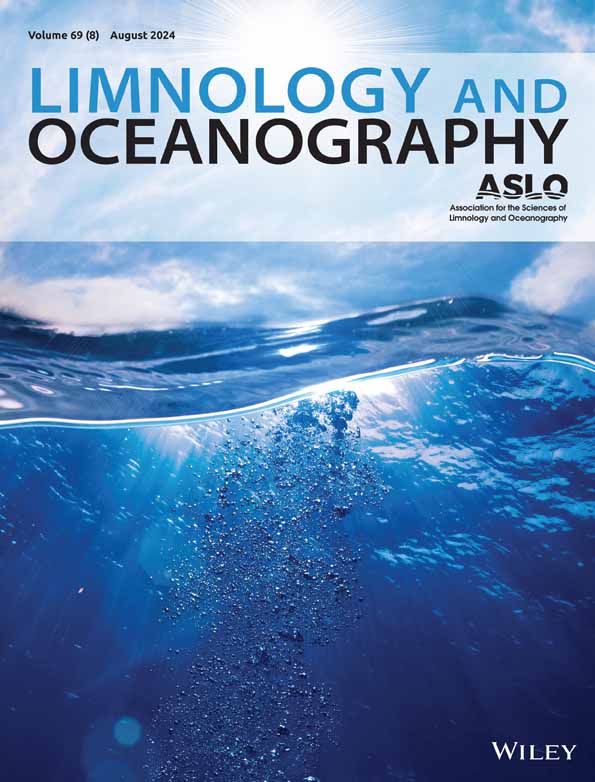A large, infrequent ecosystem subsidy (cicada carcasses) and warming additively accelerate development and increase growth of larval amphibians
IF 3.7
1区 地球科学
Q1 LIMNOLOGY
引用次数: 0
Abstract
Many ecosystems receive resource subsidies that affect productivity and food webs. Ecosystem subsidies vary in quantity, quality, and timing, and effects are often mediated by environmental factors, including temperature. Deposition of periodical cicada carcasses into ponds represents a large, high‐quality, infrequent subsidy. Cicadas emerge in massive numbers every 17 yr, and many individuals die and fall into aquatic ecosystems. As climate warms, future cicada subsidies may enter warmer ponds. We conducted a mesocosm experiment with a factorial design to examine the effects of cicada carcasses and elevated (~ 2.6°C) temperature on the growth and development of tadpoles of a common frog,一个大的,不常见的生态系统补贴(蝉尸体)和气候变暖加速了两栖动物幼虫的发育和生长
许多生态系统获得的资源补贴会影响生产力和食物网。生态系统补贴在数量、质量和时间上各不相同,其效果往往受到包括温度在内的环境因素的调节。定期将蝉的尸体沉积到池塘中,这是一种大量、高质量、不常见的补贴。蝉每17年大量出现一次,许多个体死亡并落入水生生态系统。随着气候变暖,未来的蝉补贴可能会进入更温暖的池塘。我们进行了一个因子设计的中生态实验,研究了蝉的尸体和升高(~ 2.6°C)的温度对一种常见的青蛙——黄胚水螅蝌蚪生长发育的影响。尸体和温化均能增大蛙的蜕变尺寸,缩短蛙的蜕变时间,蝉和温化对这两个性状的影响是加性的。添加胴体和加温条件下,变态质量最大,变态时间最短;环境温度下,无胴体条件下,变态质量最小,变态时间最长。尸体大大增加了藻类生物量(周围植物和浮游植物),可能是青蛙发育更快和体型更大的原因。变暖并没有增加站立藻生物量,但增加了初级产量,可能增加了蝌蚪的食物供应和生长速度。我们的研究结果表明,大量、高质量、不频繁的补贴对池塘两栖动物有强烈的影响,并且这种影响随着变暖而增强。由于成年蛙迁移到陆地,生活数年,并返回其出生池塘繁殖,蝉尸体补贴可能会调解土地和池塘之间的互惠资源通量数年。
本文章由计算机程序翻译,如有差异,请以英文原文为准。
求助全文
约1分钟内获得全文
求助全文
来源期刊

Limnology and Oceanography
地学-海洋学
CiteScore
8.80
自引率
6.70%
发文量
254
审稿时长
3 months
期刊介绍:
Limnology and Oceanography (L&O; print ISSN 0024-3590, online ISSN 1939-5590) publishes original articles, including scholarly reviews, about all aspects of limnology and oceanography. The journal''s unifying theme is the understanding of aquatic systems. Submissions are judged on the originality of their data, interpretations, and ideas, and on the degree to which they can be generalized beyond the particular aquatic system examined. Laboratory and modeling studies must demonstrate relevance to field environments; typically this means that they are bolstered by substantial "real-world" data. Few purely theoretical or purely empirical papers are accepted for review.
 求助内容:
求助内容: 应助结果提醒方式:
应助结果提醒方式:


